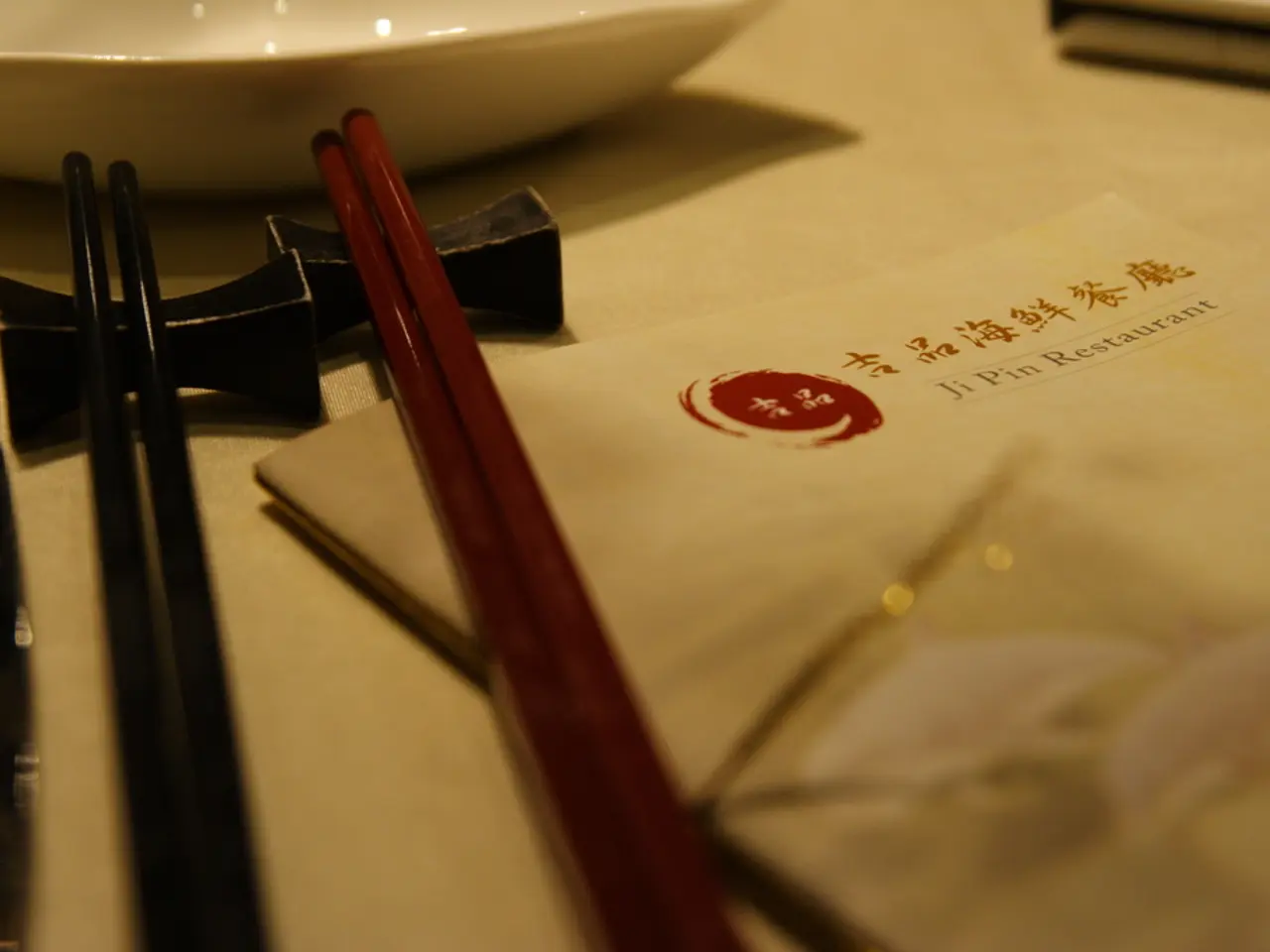Harnessing Heavy-Duty Angle Control Valves in Lime Milk Applications
Addressing obstacles in the transportation of lime milk in mining operations using Angle Control Valve technology.
Managing lime milk in mining, metallurgy, and chemical industries presents a slew of technical challenges. Lime milk's abrasiveness and high content of unreacted limestone particles often lead traditional valves to suffer from clogging, rapid wear, and premature replacement - resulting in costly downtime and decreased efficiency.
CKTech has crafted a rough-and-tumble angle control valve specifically tailored for lime milk applications. Boasting an intelligent flow path design and cutting-edge wear-resistant materials, it's engineered to deliver stable, long-term operation in the harshest of conditions.
Case Study: CKTech's Angle Type Control Valve - Triumph in Alkali Chemical Industry
Project Synopsis
- Location: One of the 200,000 Tons Alkali Industry Expansion Project
- Application: Lime milk management in the ammonia evaporation process
- Process Conditions:
- Medium: Lime milk slurry (main component: calcium hydroxide) with limestone particles
- Pipeline Diameter: DN100
- Inlet Pressure: 5 Bar
- Outlet Pressure: 4 Bar
- Flow Rate: 45 m3/h
Struggles with Previous Valves
Initial plant construction utilized an Fisher pneumatic diaphragm globe type control valve. Initially, the lime milk medium contained only small limestone particles (less than 0.5mm), as the engineering company frequently replaced the filter screen. However, after a year of operation, the valve's trim and seat were severely worn, and the valve body showed signs of wear itself, eventually failing to function due to the damaged trim and seat.
After the Fisher valve's expensive cost and long lead time, the plant engineer tried various domestic control valve brands. Unfortunately, all valve solutions ultimately failed within two months, including established local brands.
Here's a rundown of the control valve solutions provided by competing domestic brands and the issues encountered during their use:
Failed Valve Solutions
a. Pneumatic Diaphragm Globe Control Valve (with STL hardfacing on trim and seat)
- Issue: The valve became clogged within 10 days, and the valve stem bent.
- Cause: Large limestone particles (1-2 cm) accumulated inside the valve cage, causing a blockage that restricted the movement of the plug. As the actuator applied force, the plug remained stuck, pushing the valve stem out of alignment and causing it to give way.
b. V-Ball Control Valve
- Issue: Within one month, the valve began to leak.
- Cause: After repeated impacts from solid particles, one side of the valve body and plug was eroded down to only 3mm in thickness, no longer able to tighten the seal effectively.
c. Fully Lined Ceramic Valve
- Issue: The ceramic liner cracked under impact from large solid particles within a week of use, leading to the valve body suffering severe erosion.
What CKTech Engineers Did
During conversations with the end-user, CKTech engineers examined every detail of the process and control requirements. By listening to the experiences with different control valves, the team understood the advantages and pitfalls of each solution.
Step 1. Understanding Lime Milk
Lime milk is formed by burning limestone to produce quicklime, then reacting it with water to create a slurry of calcium hydroxide. This slurry is alkaline and mildly corrosive and contains many unreacted limestone particles. These particles pass through a 5mm filter screen, but if the screen is damaged, larger limestone pieces can enter the next stage of the process. The CKTech control valve will be installed in the pipeline after this filtration step.
Step 2. Choosing the Right Valve
Valve selection depends on real-world working conditions and control needs. By analyzing the problems found in the previously used control valves, CKTech engineers based their choice on the following factors:
Issues with Previous Valves
a. Pneumatic diaphragm globe type control valve
- These valves feature an S-shaped flow path, which makes it difficult for solid particles to pass through smoothly.
- Solid particles striking the valve trim and body cause severe wear and damage.
- If large particles cannot pass through the cage, they become lodged and block the valve, preventing the plug from moving.
b. V-ball control valve or eccentric rotary valve
- Solid particles constantly impact one side of the valve body and plug.
- Over time, this fast erosion weakens the valve trim and body, causing internal leakage.
c. Fully lined ceramic valve
- Ceramic has a high resistance to wear and erosion.
- However, if large solid particles impact the ceramic plug with sufficient force, the ceramic will crack, rendering the valve useless.
CKTech's Solution: Angle Control Valve for Lime Milk
Drawing lessons from these failures, CKTech has developed a specialized angle control valve designed specifically for lime milk applications.
Here's why CKTech's angle control valve is the stand-out choice for lime milk:
1. Optimized Flow Path: Anti-Clogging & Self-Cleaning to Guard the Valve Trim
One of the biggest challenges in mining applications is the accumulation and erosion of particles. CKTech's angle control valve is developed to address this issue.
- Flow path(Flow to close: high-in, low out) ensures smooth media flow through the valve, reducing the risk of clogging and particle accumulation.
- Self-cleaning function: As the medium passes through the valve seat, the flow velocity alternates between low to high and back to low. This design prevents solids from settling inside the valve, eliminating the risk of clogging.
Why this matters
- If a flow to open direction (low-in, high-out) is utilized, the valve trim and seat would be exposed to the full force of the fluid, leading to faster erosion and more severe clogging issues.
By adopting this design, maintenance frequency decreases significantly, and the valve operates for a far longer period than conventional designs.
2. Anti-Erosion Valve Seat: High-Wear-Resistant Materials & Self-Centering Design
Traditional valve trims and seats often fail due to severe erosion from solid particles. CKTech's angle control valve presents a breakthrough solution.
- STL hard alloy overlay: The valve seat and plug are completely overlaid with STL (cobalt-based alloy), providing exceptional erosion resistance and extending valve life.
- Self-centering seat & plug design: Unlike traditional valves that may suffer from misalignment, CKTech's design ensures that the valve plug and seat remain perfectly aligned, achieving Class V shutoff even after prolonged use.
- Modular seat structure: Unlike welded or threaded seats, the modular seat design of CKTech's valve allows for easy replacement, reducing downtime dramatically.
3. Oversized One-Piece Valve Stem: Risk Mitigation Against Bending and Deformation
In high-velocity and high-abrasion environments, the strength of the valve stem is critical.
- CKTech's one-piece valve plug and stem eliminates vulnerable connection points, reducing the risk of cracking.
- The valve stem diameter is 3-4 times larger than traditional designs, increasing resistance against bending forces.
- Dual-guided design guarantees that the stem moves smoothly, even under high-pressure differentials, minimizing side-load wear and failure.
This design enhances durability considerably, making the valve ideal for mining, metallurgy, and chemical process industries.
4. Special Valve Cage Design: Maximizing Wear Resistance & Flow Efficiency
Traditional control valve cages often create flow turbulence and become points of solid particle accumulation. CKTech's angle control valve is specifically engineered to avoid these problems.
- Optimized flow guide structure: The valve cage not only secures the seat but also directs the fluid flow, minimizing local high-velocity erosion.
- Enlarged cage holes: Unlike conventional designs that quickly clog, CKTech's valve allows 1-3cm solid particles to pass through, eliminating operational failures.
- 10mm thick special stainless steel cage: Standard valve cages have thicknesses ranging from 4-6mm, but CKTech's reinforced cage offers significantly improved wear and corrosion resistance, ensuring long-term performance in high-solid-content slurries.
5. High-Thrust Actuator: Crushing Clogging and Blockages
Lime milk solids can cause plug movement complications. Traditional diaphragm actuators often lack the powerful force required to dislodge minor blockages. CKTech's valve actuator completely tackles this issue.
- Fitted with a double-acting cylinder actuator, it offers 4-5 times the thrust of diaphragm actuators. Even if solid particles become lodged between the plug and seat, the actuator force easily crushes them, ensuring continuous operation.
- The high-thrust design also means faster response times and precise flow control, improving automation and overall system efficiency.
6. Reinforced Valve Body: Erosion Resistance and Longer Service Life
Research and analysis conducted during the product development process revealed that valves themselves can suffer from severe erosion in lime milk applications, even if the trim is highly resistant. CKTech engineers addressed this issue through an upgraded body design.
- Thickened valve body structure, increasing wall thickness by 30-50%, significantly improves erosion resistance.
- Special wear-resistant alloy coating, further enhancing the body's overall durability.
- Modular construction, allowing individual components to be replaced rather than the entire valve, reducing maintenance costs.
Why Mining/Engineering Companies/Valve Brands Prefer CKTech's Angle Control Valve?
- Extended Service Life - Lasts 3x longer than traditional control valves, cutting replacement frequency.
- Minimal Downtime - Quick-replacement design reduces downtime by over 60%**, enhancing operational efficiency.
- **Superior Wear Resistance - Trim, seat, and body materials engineered to endure high-solid-content media.
- **Ideal for Harsh Mining Conditions - Designed specifically for high-abrasion, high-solid-content slurries, ensuring long-term performance.
CKTech's angle control valve has successfully been implemented in multiple mining ventures and has garnered praise from customers. If you're on the hunt for a robust, low-maintenance control valve for lime milk or high-solid-content applications, CKTech is your top choice!
CKTechangle control valve's implementation in the alkali chemical industry showcased its effectiveness, exhibiting long-term operation even in harsh conditions. By combining an intelligent flow path design with high-wear-resistant materials, it adapted to the demanding nature of lime milk applications.
In capital-intensive industries like finance, where downtime and maintenance costs can have significant financial impacts, CKTech's angle control valve offers an attractive alternative. Its extended service life, minimal downtime, and superior wear resistance make it an ideal solution for high-abrasion applications, translating into savings and increased operational efficiency.




